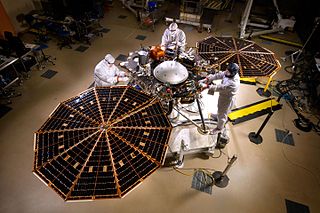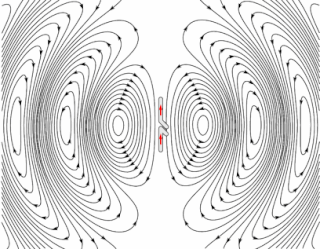The field of electrical and electronics engineering has grown to include many related disciplines and occupations.

Electrical engineering is a professional engineering discipline that generally deals with the study and application of electricity, electronics, and electromagnetism. This field first became an identifiable occupation in the later half of the 19th century after commercialization of the electric telegraph, the telephone, and electric power distribution and use. Subsequently, broadcasting and recording media made electronics part of daily life. The invention of the transistor, and later the integrated circuit, brought down the cost of electronics to the point they can be used in almost any household object.
The Dictionary of Occupational Titles lists a number of occupations in electrical/electronics engineering. It describes them as concerned with applications of the laws of electrical energy and the principles of engineering for the generation, transmission and use of electricity, as well as the design and development of machinery and equipment for the production and utilization of electrical power: [1]

The Dictionary of Occupational Titles or D-O-T (DOT) refers to a publication produced by the United States Department of Labor which helped employers, government officials, and workforce development professionals to define over 13,000 different types of work, from 1938 to the late 1990s. The DOT was created by job analysts who visited thousands of US worksites to observe and record the various types of work, and what was involved. Innovative at the time, the DOT included information still used today in settling EEO and Workers Comp claims, like the physical abilities required to perform that occupation, and the time and repetitiveness of those physical actions.

Engineering is the application of knowledge in the form of science, mathematics, and empirical evidence, to the innovation, design, construction, operation and maintenance of structures, machines, materials, software, devices, systems, processes, and organizations. The discipline of engineering encompasses a broad range of more specialized fields of engineering, each with a more specific emphasis on particular areas of applied mathematics, applied science, and types of application. See glossary of engineering.

Electricity is the set of physical phenomena associated with the presence and motion of matter that has a property of electric charge. In early days, electricity was considered as being not related to magnetism. Later on, many experimental results and the development of Maxwell's equations indicated that both electricity and magnetism are from a single phenomenon: electromagnetism. Various common phenomena are related to electricity, including lightning, static electricity, electric heating, electric discharges and many others.
- electrical engineer
- electrical test engineer
- electrical design engineer
- electrical-prospecting engineer (alternate title: electrical engineer, geophysical prospecting)
- electrical-research engineer
- electronics engineer
- electronics-design engineer
- electronics-research engineer
- electronics-test engineer
- illuminating engineer
- planning engineer, central office facilities (tel. & tel.)
- supervisor, drafting and printed circuit design
- sales-engineer, electrical products
- sales-engineer, electronics products and systems
- electrical technician (alternate title: electrical-laboratory technician)
- electronics technician
- technician, semiconductor development
- cableengineer, outside plant (telephone and telecommunications)
- distribution-field engineer (utilities) (alternate title: line inspector)
- electrical engineer, power system (utilities) (alternate title: power engineer)
- electrolysis-and-corrosion-control engineer (alternate titles: corrosion-control specialist; corrosion engineer; electrolysis engineer; electrolysis investigator)
- engineer of system development (utilities) (alternate titles: development-and-planning engineer; planning engineer; system-planning engineer)
- engineer-in-charge, studio operations (radio-TV broad.) (alternate titles: chief engineer; chief engineer, broadcasting operations; transmission engineer)
- engineer-in-charge, transmitter (radio-TV broad.) (alternate titles: director of engineering; engineer, chief; transmitter engineer)
- induction-coordination power engineer (utilities)
- outside-plant engineer (tel. & tel.)
- power-distribution engineer (utilities) (alternate title: electric-distribution engineer)
- power-transmission engineer (utilities) (alternate titles: electrical-transmission engineer; transmission-and-coordination engineer; transmission-line engineer)
- protection engineer (utilities)
- supervisor, microwave (radio-TV broad.)
- transmission-and-protection engineer (tel. & tel.) (alternate title: transmission engineer)
- engineering manager, electronics
- central-office equipment engineer (tel. & tel.)
- commercial engineer (radio-TV broad.) (alternate title: traffic engineer)
- customer-equipment engineer (tel. & tel.) (alternate title: services engineer)
- instrumentation technician
- controls designer (alternate title: controls project engineer)
- integrated circuit layout designer (alternate title: mask designer)
- printed circuit designer
- drafter, electrical
- drafter, electronic (alternate title: drafter, electromechanical)
- design technician, computer-aided (electron. comp.) alternate title: digitizer)
A test engineer is a professional who determines how to create a process that would best test a particular product in manufacturing and related disciplines in order to assure that the product meets applicable specifications. Test engineers are also responsible for determining the best way a test can be performed in order to achieve adequate test coverage. Often test engineers also serve as a liaison between manufacturing, design engineering, sales engineering and marketing communities as well.
A design engineer is a person who may be involved in any of various engineering disciplines including civil, mechanical, electrical, chemical, textiles, aerospace, nuclear, manufacturing, systems, and structural /building/architectural. Design engineers tend to work on products and systems that involve adapting and using complex scientific and mathematical techniques. The emphasis tends to be on utilizing engineering physics and sciences to develop solutions for society.

Prospecting is the first stage of the geological analysis of a territory. It is the physical search for minerals, fossils, precious metals or mineral specimens, and is also known as fossicking.
The Institute of Electrical and Electronics Engineers (IEEE) has developed specialized groups ("societies") which professionals can join according to their specialization: [2]

The Institute of Electrical and Electronics Engineers (IEEE) is a professional association with its corporate office in New York City and its operations center in Piscataway, New Jersey. It was formed in 1963 from the amalgamation of the American Institute of Electrical Engineers and the Institute of Radio Engineers.
- aerospace and electronic systems
- antennas and propagation
- broadcast technology
- circuits and systems
- communications
- components, packaging, and manufacturing technology
- computational intelligence
- computers
- consumer electronics
- control systems
- dielectrics and electrical insulation
- electron devices
- electromagnetic compatibility
- engineering in medicine and biology
- geoscience and remote sensing
- industrial electronics
- industry applications
- information theory
- instrumentation and measurement
- intelligent transportation systems
- magnetics
- microwave theory and techniques
- nuclear and plasma sciences
- oceanic engineering
- photonics
- power electronics
- power and energy
- product safety engineering
- reliability
- robotics and automation
- signal processing
- solid-state circuits
- systems, man, and cybernetics
- ultrasonics, ferroelectrics, and frequency control
- vehicular technology

Aerospace is the human effort in science, engineering, and business to fly in the atmosphere of Earth (aeronautics) and surrounding space (astronautics). Aerospace organizations research, design, manufacture, operate, or maintain aircraft or spacecraft. Aerospace activity is very diverse, with a multitude of commercial, industrial and military applications.

Electronics comprises the physics, engineering, technology and applications that deal with the emission, flow and control of electrons in vacuum and matter. The identification of the electron in 1897, along with the invention of the vacuum tube, which could amplify and rectify small electrical signals, inaugurated the field of electronics and the electron age.

In radio engineering, an antenna is the interface between radio waves propagating through space and electric currents moving in metal conductors, used with a transmitter or receiver. In transmission, a radio transmitter supplies an electric current to the antenna's terminals, and the antenna radiates the energy from the current as electromagnetic waves. In reception, an antenna intercepts some of the power of a radio wave in order to produce an electric current at its terminals, that is applied to a receiver to be amplified. Antennas are essential components of all radio equipment.






